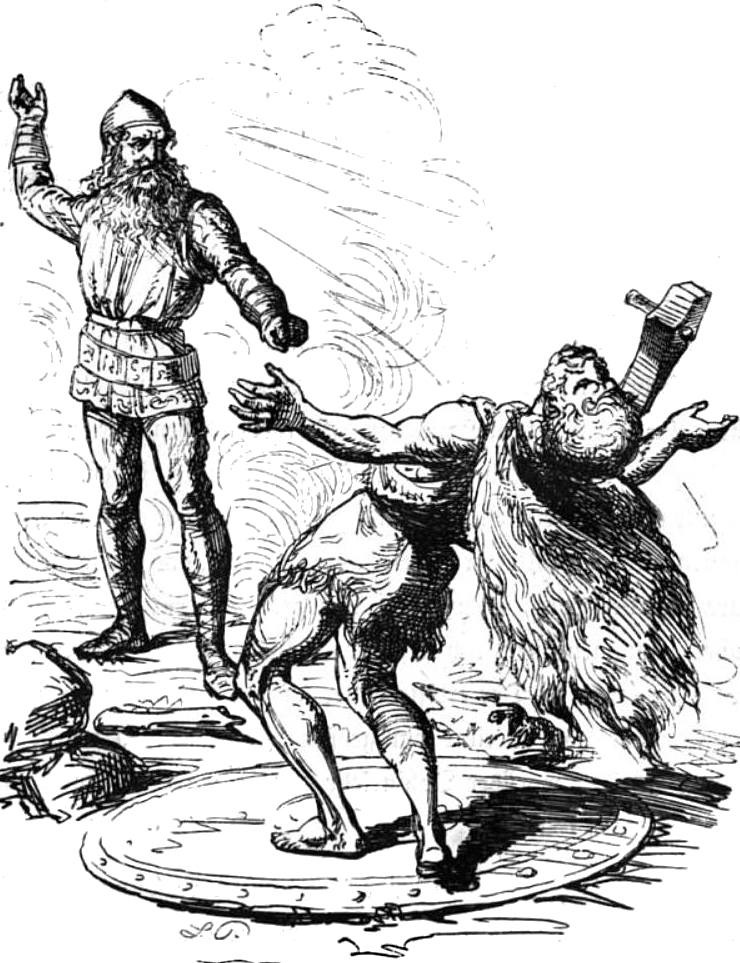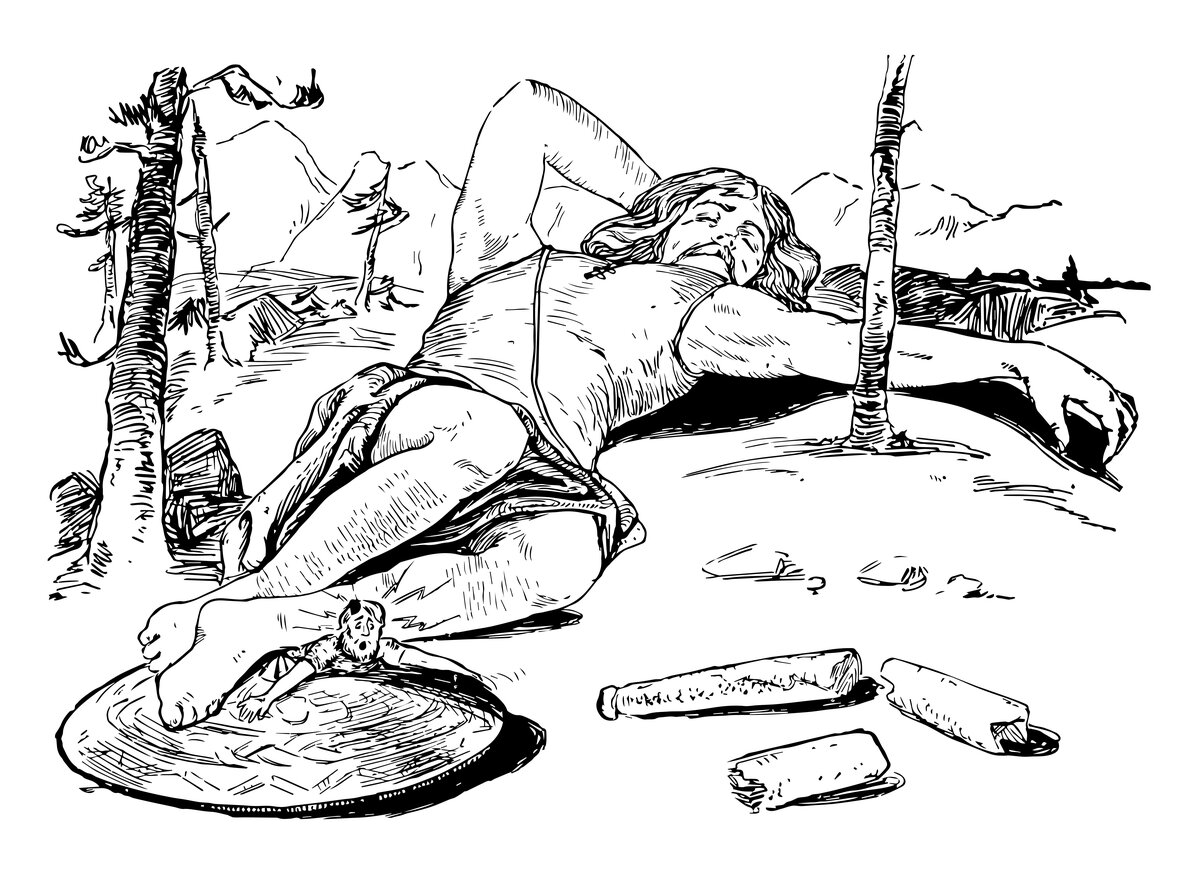Hrungnir was one of the strongest frost giants in Jotunheim because he was made of stone.
In Snorri Sturluson’s Prose Edda, a saga in the Skáldskaparmál tells the tale of Hrungrir and his unliking meeting with Odin that eventually led him to Asgard. What started as a horse race to determine whose horse was the fastest eventually crescendoed into a drunken brawl with Thor on the border of Asgard and Jotunheim.
In a nutshell, Odin provoked Hrungnir into a race, got him drunk off mead, encouraged Thor to fight Hrungnir (which almost killed him), and still walked away with the horse without so much as lifting a finger.
Hrungnir Meets Odin
While in Jotunheim one day, Odin spotted the stone giant Hrungnir atop his impressive horse Gullfaxi. Hrungnir’s horse was indeed remarkable, but Odin was confident that his horse Sleipnir was even faster.
Odin boasted about how Sleipnir was the fastest horse in Midgard and Asgard, which angered Hrungnir. He accepted Odin’s challenge to a horse race to prove that Gullfaxi was the superior horse.
The two raced, and Odin consistently earned a slight edge over Hrungnir. At the end of the race, Odin defeated Hrungnir, and the two ran for so long that they found themselves in Asgard.
As a gesture of good sportsmanship, Odin welcomed Hrungnir into the halls of Valhalla for a drink. And Hrungnir accepted.
Hrungnir Overstays His Welcome
Within the halls of Valhalla, Hrungnir drinks a little too much mead. In his drunken stupor, he threatens to burn Asgard to the ground, kill all of the Æsir gods (except Freyja and Síf), pick up Valhalla and carry it back to Jotunheim. The Æsir gods were greatly tired of Hrungnir’s drunken threats and called upon Thor to remove him.
Thor was furious to see an enemy of the Æsir within Valhalla drinking from Thor’s horn. Enraged, he challenged Hrungnir to a battle. Hrungnir appealed to Thor’s sense of honor and said it would be shameful to challenge someone unarmed. Instead, he accepted his duel with one exception: they fight on the lands that border Asgard and Jotunheim. And Thor accepted.
The Battle Between Thor And Hrungnir
Word in Jotunheim spread quickly. Hrungnir was, by far, the strongest frost giant in all of Jotunheim. If Thor defeated Hrungnir, it would send a message to the Æsir gods that they could easily conquer Jotunheim if they were inclined. Losing this battle was not an option.
To give Hrungnir a slight edge, the jötunn constructed a clay man that would strike fear in the hearts of all that approached. They needed a heart to implant in the clay giant but could only find the heart of a mare. While Hrungnir’s heart was made of stone, the clay giant had a weak heart.
When Thor and his servant Þjálfi arrived, the battle began. As Þjálfi approached the clay giant, it wet its pants and went down with a single blow. The clay giant was strong, but it had a weak heart. When Thor approached Hrungnir, the two threw their weapons at one another.

Thor’s hammer, Mjölnir, caused Hrungnir’s whetstone to burst into a million pieces, one of which landed in Thor’s brain. Hrungnir died after the immediate clash, but his collapsed body pinned Thor’s neck under his Hrungnir’s leg.
All of the Æsir gods tried to lift the heavy leg off of Thor but were unsuccessful. However, Thor’s son Magni could lift the leg and save his father.
Hrungnir’s horse Gullfaxi
Thor was so thankful to his young son that he awarded him Hrungnir’s horse Gullfaxi. And this angered Odin.
Odin felt that even though Magni freed his father, he was still half Æsir, half anti-god (his mother was a giantess), and therefore didn’t deserve the horse. So, Odin won the horse.
The Saga of Hrungnir in Viking Culture
Vikings were tenacious brawlers, and the saga of Hrungnir served a vital message on the battlefield. The clay giant that the jötunn constructed was imposing and powerful. It had bulging muscles and stood almost nine miles tall. However, it had the weak heart of a mare.
For the Vikings, physical strength and power meant nothing if you didn’t have the heart of a warrior.

